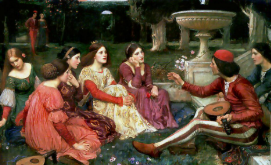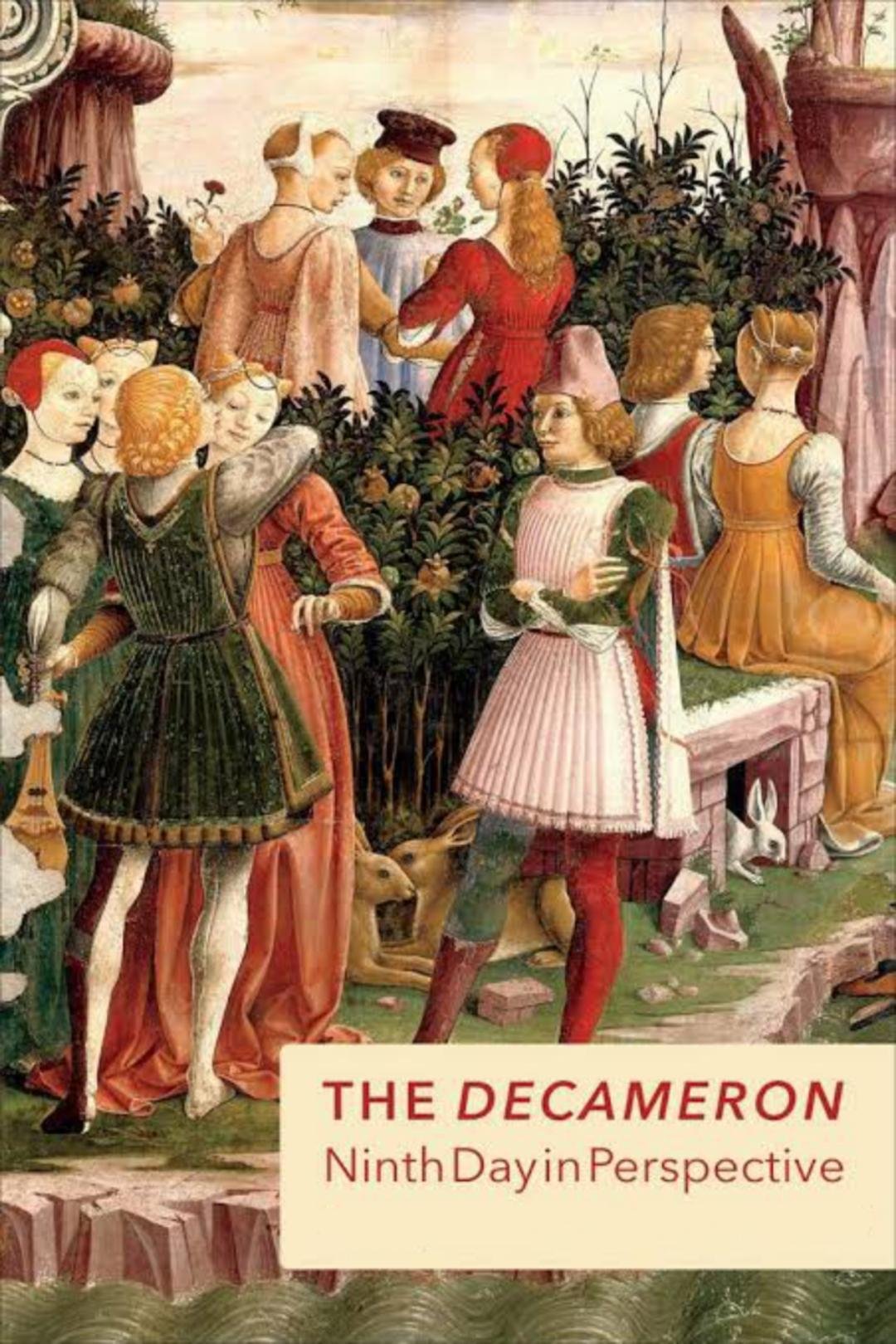“The Veil of Silence: Alatiel’s Journey Through Desire and Deception”

In Giovanni Boccaccio’s The Decameron, the tale of Alatiel stands out as a complex exploration of female identity, reputation, and survival. Narrated on the second day by Filostrato, the story recounts the incredible misadventures of a beautiful Saracen princess who, despite being passed from man to man across multiple kingdoms, returns home and marries a king while still claiming to be a virgin. This ironic and provocative tale offers sharp commentary on gender expectations, the performance of chastity, and the value of silence—both in the 14th century and today.
Summary
Alatiel, daughter of the Sultan of Babylon, is sent to marry the King of Algarve as part of a political alliance. Before she arrives, a storm wrecks her ship, launching a long and harrowing journey across the Mediterranean. Over four years, she becomes the lover of eight different men, each of whom she loses through betrayal, war, or misfortune. Ultimately, she is rescued by a merchant who returns her to her father. With the help of a cunning servant, Alatiel fabricates a story of monastic seclusion and virginity, successfully marrying the King of Algarve as originally intended.
Analysis
Boccaccio uses irony as a central literary device. The sharp contrast between Alatiel’s lived experiences and her final claim to untouched virtue is both comic and subversive. Instead of being punished for deceit, Alatiel is rewarded—highlighting how cleverness and adaptability can triumph in a rigid, patriarchal world.
Alatiel’s character is notable not for her voice—she says little—but for how she is seen and what she survives. Her beauty is a double-edged sword, granting her favor yet constantly placing her in danger. While the men around her act impulsively, driven by desire or ambition, she remains composed and calculated. Her silence is not weakness, but strategy. Her final reinvention is a bold act of narrative control, asserting agency in a world that has repeatedly objectified her.
The tale also exposes 14th-century anxieties about female sexuality and reputation. In a time when a woman’s worth was tied to her chastity, Boccaccio disrupts this notion by allowing a woman with a complex sexual past to “restart” her social identity. Her tale suggests that appearances and storytelling carry more weight than moral truth, especially in a society obsessed with virtue.
Alatiel’s travels through Christian and Muslim territories serve to blur cultural boundaries while reinforcing shared human preoccupations with honor, beauty, and power. For contemporary readers, her story resonates with ongoing debates about female agency, sexual autonomy, and the control of women’s narratives. Is her silence complicity—or a form of resistance? Is her reinvention dishonest—or empowering?
Conclusion
The tale of Alatiel is not just a story of survival—it is a meditation on identity, storytelling, and societal performance. Through irony and character inversion, Boccaccio invites readers to reconsider what virtue means and how it is perceived. Even centuries later, Alatiel’s journey challenges us to examine the narratives we accept and the truths we choose to reveal—or conceal.
#DECAMERON #MEDIEVAL #LITERATURE






